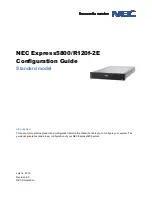
500300 Rev. U
Operating Instructions
3-9
Normally, the tape drive determines the read density by reading the ID burst on the
tape.
The read density is indicated at the beginning of display line two while the tape is at
BOT as shown in Figure 3-6. After the tape has left BOT, the read density is no
longer displayed.
NOTE
Read commands include all read, space and filemark search commands. Write commands
include all write, erase, and write filemark commands.
3.6.1.4
Detected Density
The term
detected density
refers to the density indicated by the ID burst on the tape.
It is determined by the tape drive when it reads the ID burst on the tape. The
detected density is indicated at the end of display line two while the tape is at BOT
as shown in Figure 3-6 After the tape has left BOT, the detected density is no longer
displayed.
If a tape is loaded which has no ID burst, the drive displays an asterisk ( * ) and
uses the value stored in the NO-ID DEN parameter as the detected density.
3.6.1.5
Operating Density
After a tape has left BOT, the display changes. The read and write density
indicators disappear and are replaced by the
operating density
which appears at the
beginning of display line one as shown in Figure 3-9 When the tape returns to BOT,
the display again indicates the write, read, and detected densities.
6250 1% 10.5”
Operating density
(appears only after the
tape has moved
forward from BOT).
Figure 3-9 Front Panel display after Tape Has Moved Forward from BOT.
3.6.1.6
NO-ID DEN
NO-ID DEN is a parameter that you can select in the Drive Configuration menu. Its
value can be 800, 3200, or BLANK, and the tape drive uses it to determine the
detected density if a tape is loaded that has no ID burst. The lack of an ID burst
could be caused by one of the following:
•
The tape is recorded in the NRZI (800 CPI) format;
•
The tape is new or completely blank;
•
The ID burst is unreadable;
















































